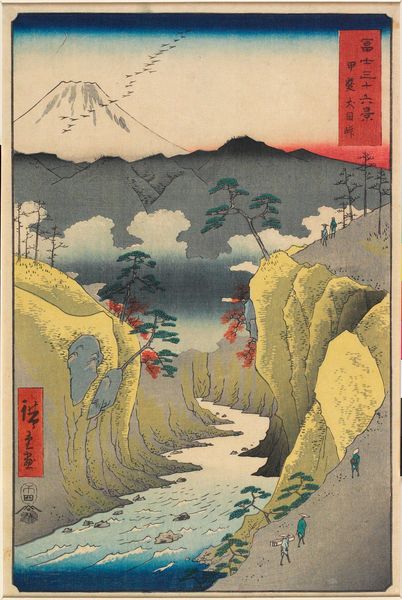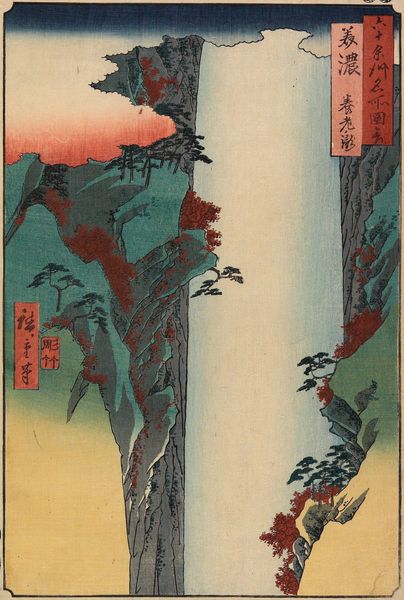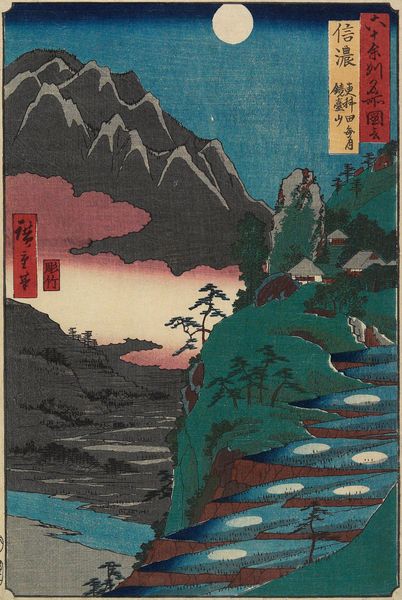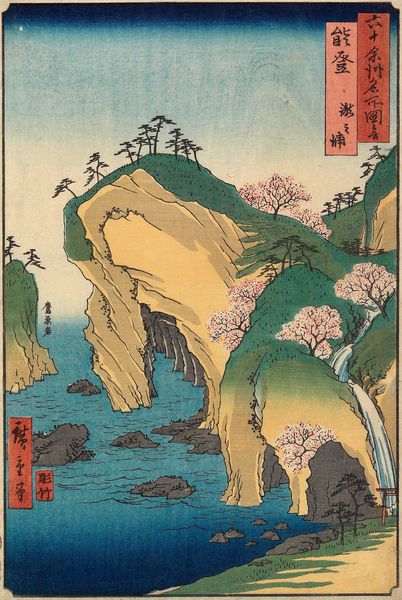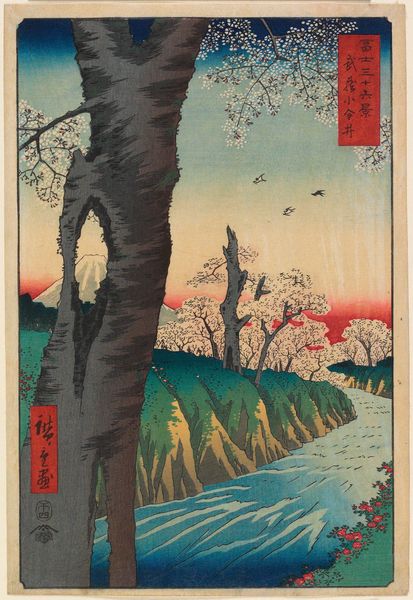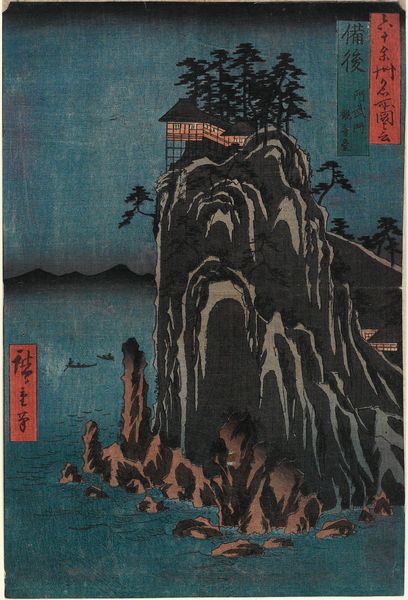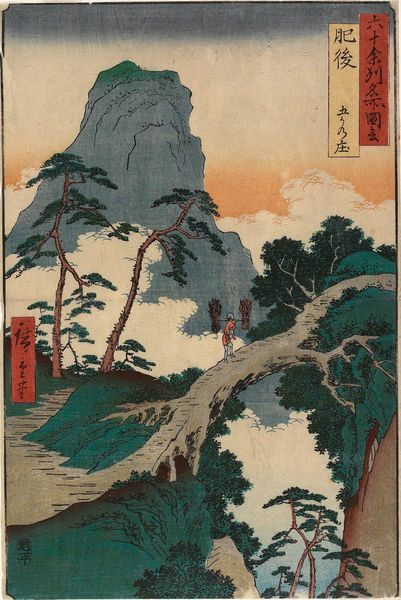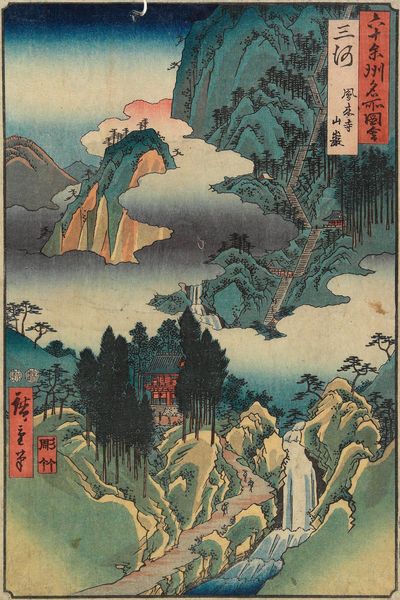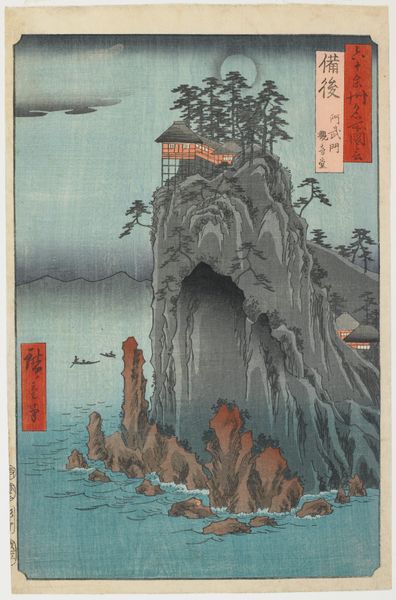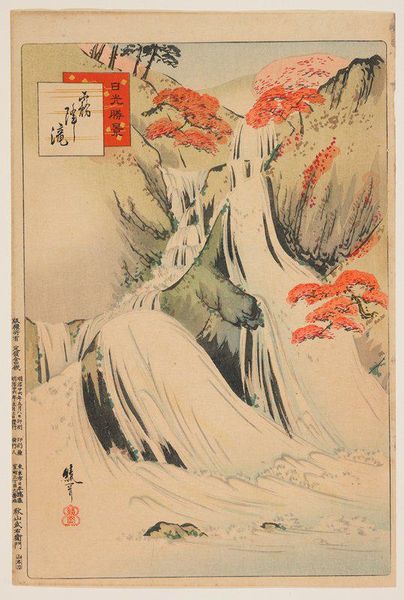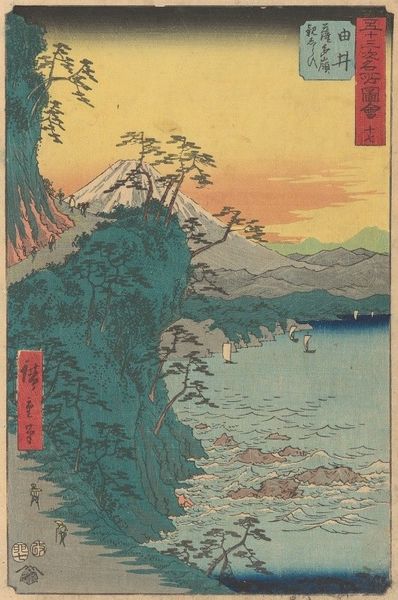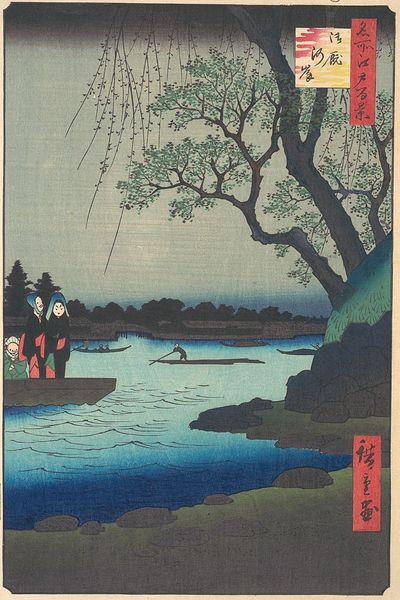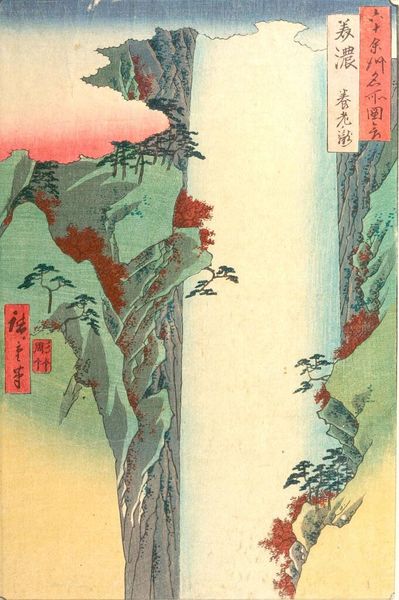
print, paper, watercolor, ink, woodblock-print
#
water colours
# print
#
asian-art
#
landscape
#
ukiyo-e
#
japan
#
paper
#
watercolor
#
ink
#
woodblock-print
#
northern-renaissance
#
watercolor
Dimensions: 13 9/16 × 9 1/16 in. (34.5 × 23 cm) (image, vertical ōban)
Copyright: Public Domain
Utagawa Hiroshige created this woodblock print known as "Monkey Bridge" at an unknown date. Imagery in this print evokes ideas about the relationship between humans and nature. Look at how the bridge, a symbol of human ingenuity, is dwarfed by the grandeur of the natural landscape. Prints like these played an important role in shaping perceptions of Japanese landscapes during the Edo period. As urban centers grew, so did an interest in representing distant landscapes. Hiroshige, and artists like him, were heavily influenced by the commercial print market and the rise of tourism. Prints were affordable and easily distributed, making them accessible to a wide audience. It is useful to consider this print within the context of its original audience, their values, and the economic structures that made its production possible. Through careful examination of prints and other historical documents, historians can reveal the complex interplay between art, commerce, and society. Art isn't created in a vacuum; rather, it reflects and shapes the world around it.
Comments
No comments
Be the first to comment and join the conversation on the ultimate creative platform.
